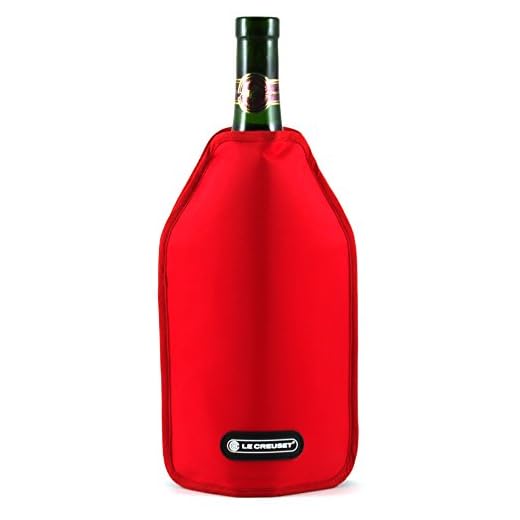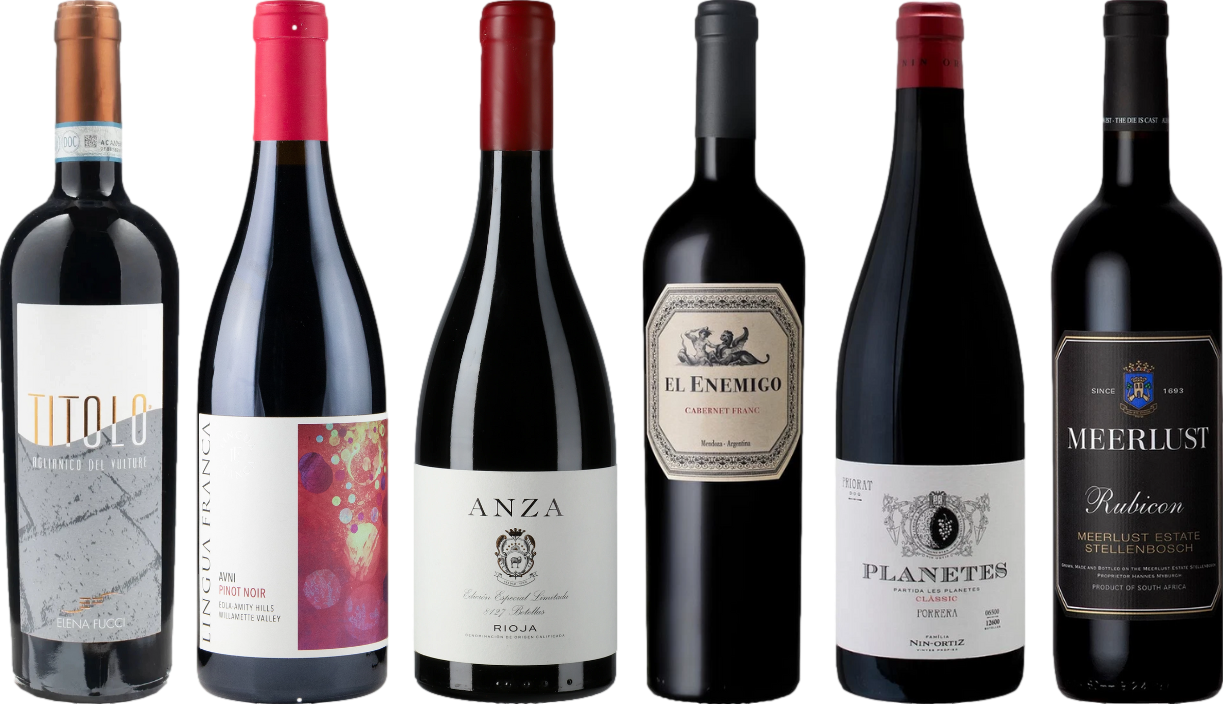



For optimal enjoyment, serving temperature plays a critical role. I recommend serving these beverages between 55°F to 65°F (13°C to 18°C). This range allows the complexity of flavors to shine while maintaining a balanced acidity.
When temperatures drop below this range, the nuances can become muted, making it difficult to appreciate the wine’s full character. Conversely, serving them too warm can accentuate alcohol, overshadowing the delicate notes that define each bottle. Therefore, a slight chill can enhance your tasting experience significantly.
To achieve the perfect temperature, consider placing the bottle in an ice bucket for about 15 minutes before serving. Alternatively, if you are short on time, a brief stint in the refrigerator for approximately 30 minutes will suffice. This approach ensures you enjoy the full spectrum of aromas and flavors, elevating your overall experience.
Do Red Varietals Require Cooling?
Serving these beverages at a temperature around 60-65°F (15-18°C) enhances their flavors and aromas. Cooling them slightly can soften tannins and lift fruity notes, especially in younger bottles. If the setting is warm, a brief chill can be beneficial, but avoid temperatures below 55°F (13°C) as it may mute complexities.
Temperature Guidelines
For lighter-bodied options like Pinot Noir, aim for the higher end of the spectrum, while fuller-bodied selections such as Cabernet Sauvignon can be served at the lower end. If you’re unsure, a simple test is to place the bottle in the fridge for about 30 minutes prior to serving. This method provides a quick way to achieve the desired temperature without compromising the character of the drink.
Situational Considerations
Consider the environment and food pairings. If enjoying with a hearty meal, serving at room temperature may be ideal. However, with lighter fare or during warmer months, a slight cooling can enhance the overall experience. Always trust your palate–if it tastes better at a cooler temperature, go for it.
Understanding the Ideal Serving Temperature for Red Wines
The optimal temperature for serving these beverages is generally between 60°F to 65°F (15°C to 18°C). This range allows the complex aromas and flavors to emerge fully, enhancing the overall tasting experience.
- Light-bodied options, like Pinot Noir, are best served at around 55°F to 60°F (13°C to 15°C).
- Medium-bodied selections, such as Merlot, thrive at 62°F to 65°F (17°C to 18°C).
- Full-bodied varieties, including Cabernet Sauvignon, are ideal at 65°F (18°C).
Temperature affects the perception of tannins and acidity. Serving at a cooler temperature can soften the tannins, making it more approachable. Conversely, warmer temperatures may amplify these characteristics, which could be beneficial or detrimental depending on personal preference and the specific bottle.
If serving at room temperature, consider the environment; a warm room can elevate the temperature of the bottle quickly. When in doubt, a brief chill in the refrigerator for about 15 to 30 minutes can help achieve the desired balance.
Using a thermometer can aid in achieving accuracy. If you don’t have one, touching the bottle can give you a sense of its temperature. Aim for a slight coolness to the touch, avoiding the extremes that come from being too cold or too warm.
Ultimately, the right temperature enhances the nuances in each sip, allowing for a more enjoyable experience that highlights the craftsmanship of each selection.
Factors Influencing the Temperature of Red Wines
The optimal serving temperature for these beverages is influenced by various factors, including grape varietal, body structure, and alcohol content. For example, lighter-bodied options, such as Pinot Noir, benefit from a slightly cooler temperature, typically around 55-60°F (13-16°C). In contrast, richer and fuller-bodied choices like Cabernet Sauvignon can be served warmer, around 60-65°F (16-18°C).
Another critical aspect is the environment in which they are consumed. Ambient temperature and the type of glassware also play a significant role. A warmer room may necessitate a slightly cooler pour to maintain its intended profile. Moreover, using a larger bowl glass can encourage the wine to warm up quickly, enhancing aroma and flavor profiles.
Additionally, the serving method can alter temperature perception. Decanting allows for aeration, which can slightly increase warmth while softening tannins, thus affecting overall enjoyment. Serving these beverages at the ideal temperature enhances the tasting experience, balancing acidity and tannins while allowing the complexity of flavors to shine.
Lastly, personal preference cannot be overlooked. Some individuals may prefer a more chilled experience, while others may enjoy the warmth that allows for richer aromas. Understanding these influences will enable a more tailored approach to serving, ensuring a delightful experience for all.
How Chilling Affects Flavor Profiles of Different Varietals
Chilling can significantly alter the taste characteristics of various grape types. For lighter-bodied selections, such as Pinot Noir or Gamay, a slight drop in temperature can enhance freshness and acidity, making them more vibrant on the palate. A serving temperature around 55°F (13°C) is often recommended for these choices, as it accentuates their fruit-forward notes and floral aromas.
On the other hand, fuller-bodied options like Cabernet Sauvignon or Syrah benefit from being served at a warmer temperature, typically around 65°F (18°C). Chilling these varietals may mute their complex flavors, such as dark fruit, spice, and earthy undertones. This temperature allows the wine to reveal its depth and structure, showcasing the tannins more effectively.
The impact of chilling also extends to the perception of sweetness and bitterness. Cooler temperatures can suppress sweetness, making a wine taste drier, while enhancing bitterness. This is particularly relevant for selections with a higher tannin content, where chilling can lead to a more pronounced astringency. Therefore, it’s crucial to find the right balance to maintain the intended flavor profile.
| Grape Variety | Recommended Serving Temperature | Flavor Enhancements |
|---|---|---|
| Pinot Noir | 55°F (13°C) | Increased freshness and floral notes |
| Cabernet Sauvignon | 65°F (18°C) | Enhanced complexity and depth |
| Gamay | 55°F (13°C) | Boosted fruitiness and vibrancy |
| Syrah | 65°F (18°C) | Prominent tannins and spice |
Ultimately, understanding how temperature affects the profile of each varietal allows for a more enjoyable experience. Adjusting the chill factor based on the specific grape type helps in expressing its unique characteristics more effectively.
Practical Tips for Chilling Red Wines at Home
To effectively cool your choice of varietals, aim for a temperature of 55°F to 65°F (13°C to 18°C). Here are specific methods to achieve this:
- Ice Bucket Method:
Fill a bucket with equal parts ice and water, then submerge the bottle up to its neck. This method typically takes about 15-20 minutes for optimal cooling.
Must-HaveLe Creuset Cerise Wine Cooler SleeveKeep your wine chilled for hoursThis stylish and functional wine cooler sleeve features lightweight, pierce-resistant construction and adjustable gel packs to ensure your wine stays perfectly chilled during any occasion. - Freezer Technique:
Wrap the bottle in a damp cloth and place it in the freezer for 10-15 minutes. This accelerates the chilling process without risking freeze damage.
- Chilling Sleeves:
Invest in reusable cooling sleeves that can be stored in the freezer. Slip one onto the bottle for quick temperature adjustment, typically within 20-30 minutes.
- Ice Cubes in Glass:
If immediate enjoyment is key, add a couple of ice cubes to your glass. This will cool your pour without significantly diluting the character.
- Temperature Control:
Use an instant-read thermometer to monitor the temperature of your bottle. This ensures you serve it at the right degree for the best experience.
Consider the wine’s structure and age when chilling. Younger, fruit-forward selections often benefit from lower temperatures, while more complex, older variants may be best served slightly warmer. Always taste and adjust accordingly to find your preference.
Lastly, avoid extreme temperature changes, as this can affect flavor and aroma. Gradual cooling allows the wine to maintain its integrity and character.
Common Myths About Serving Temperature of Red Wines
It’s a common belief that all full-bodied beverages should be served at room temperature. However, this isn’t universally applicable. Many assume that cooling these beverages compromises their character, but the truth is nuanced. Slightly lowering the temperature can enhance certain flavors and aromas, particularly in warmer climates or during hot seasons.
Another misconception is that all types of this drink should be served at the same temperature. In reality, different varieties possess distinct profiles that can benefit from specific serving conditions. For instance, lighter selections are often best appreciated at slightly cooler temperatures than their more robust counterparts.
Some enthusiasts argue that chilling impacts the balance, masking intricacies. While excessive cooling may indeed mute delicate notes, a moderate drop can actually highlight freshness and acidity. This is particularly true for fruit-forward selections, which often shine with a little chill.
Many people also believe that using ice to cool down these beverages is a faux pas. While traditionalists might frown upon it, adding ice can be acceptable, especially in casual settings or in warmer weather. Just be mindful of diluting the flavors–using larger ice cubes can minimize this effect.
Lastly, there’s a notion that once a bottle is opened, it must be consumed quickly at a fixed temperature. In fact, the flavor profile can evolve over time as it breathes. Keeping a corked bottle in a cooler environment can help maintain its quality for a longer period, allowing you to explore its development.
When to Serve Red Wines at Cooler Temperatures
For optimal enjoyment, consider serving certain varieties at 55-65°F (13-18°C). This is especially true for lighter, fruit-forward selections such as Pinot Noir or Gamay. These wines often benefit from a slight reduction in warmth, which enhances their aromatic profiles and brightens their flavors.
Timing and Context
During warmer months or in hot climates, a slight chill can refresh the palate. Outdoor gatherings, barbecues, or picnics are perfect occasions to serve these selections cooler. Additionally, if the meal features rich or spicy dishes, a cooler serving temperature can provide a pleasant contrast, elevating the overall dining experience.
Practical Considerations
Before serving, place the bottle in the refrigerator for about 30 minutes. Alternatively, an ice bucket with water and ice can effectively lower the temperature within 15-20 minutes. Always check the temperature before pouring to ensure a delightful tasting experience. If you’re hosting an event, consider using a best solar generators for events to keep your beverages cool without any hassle.










